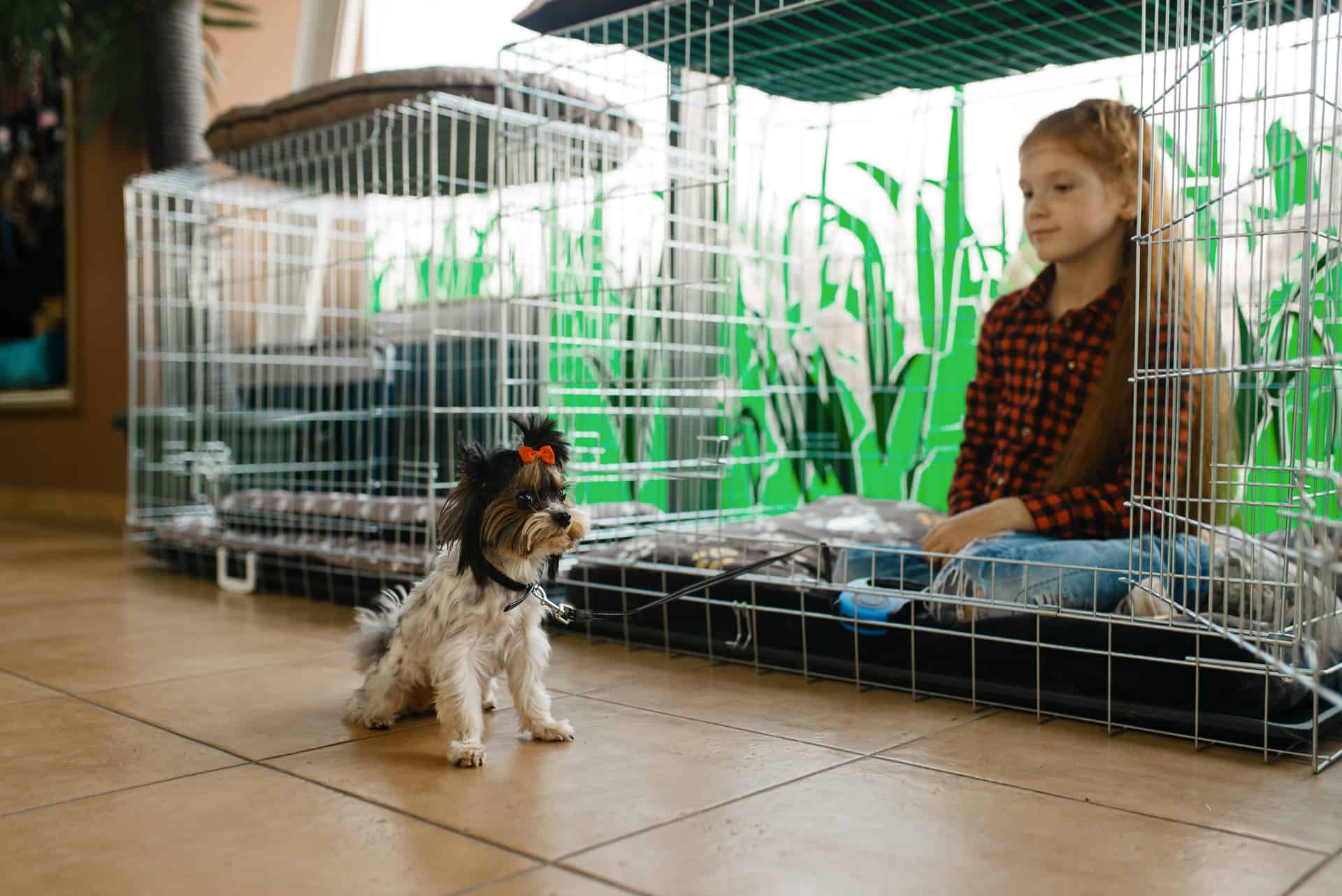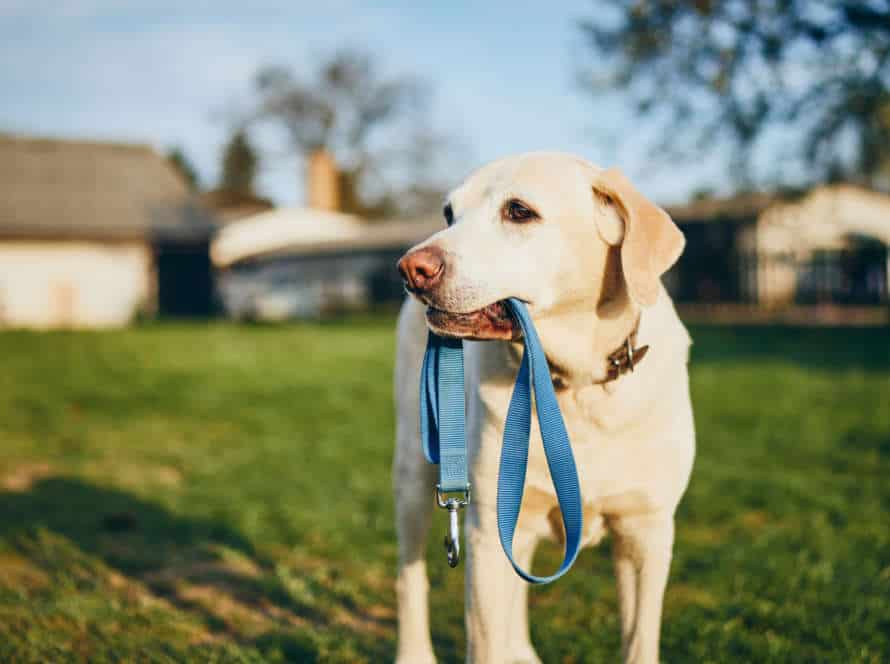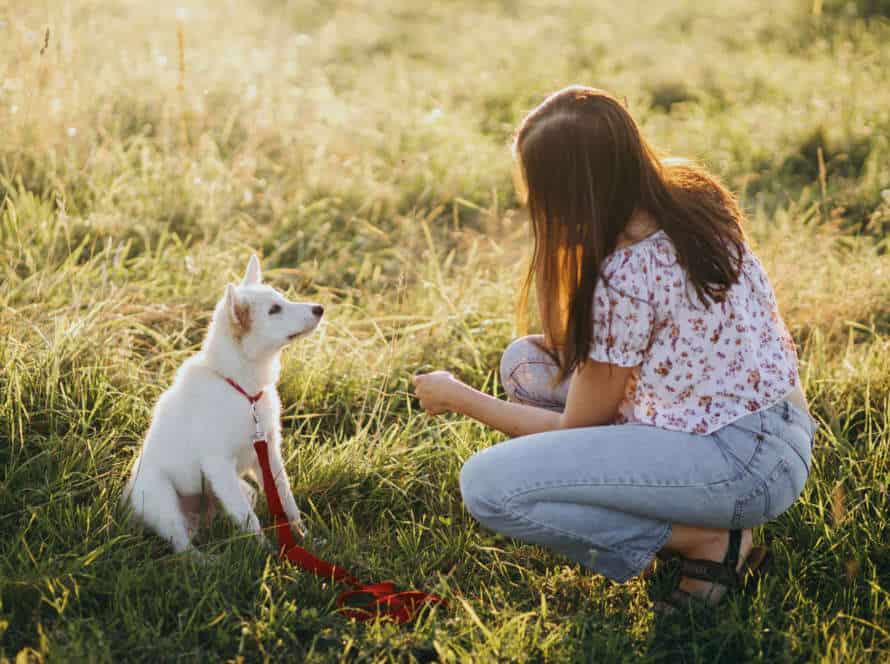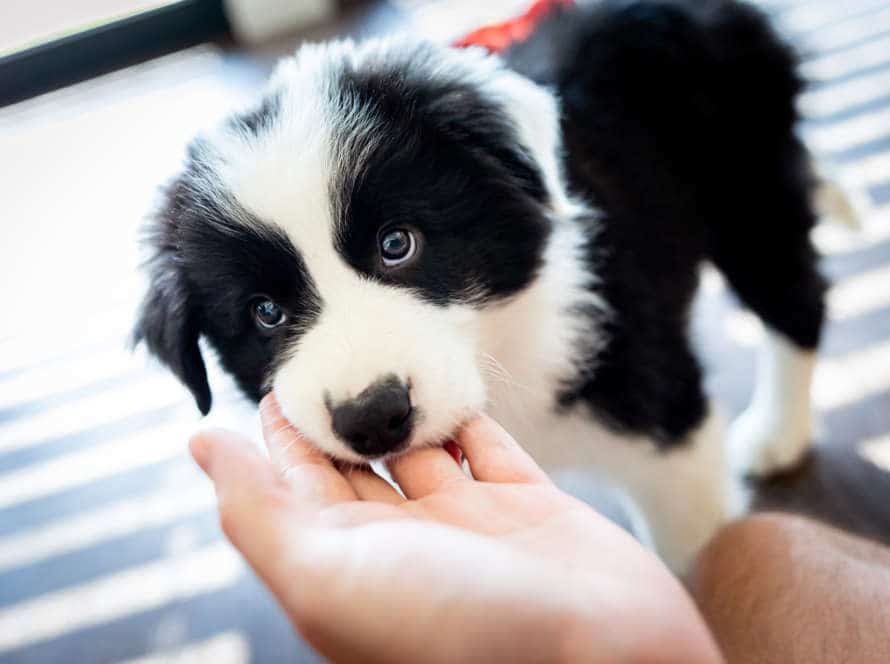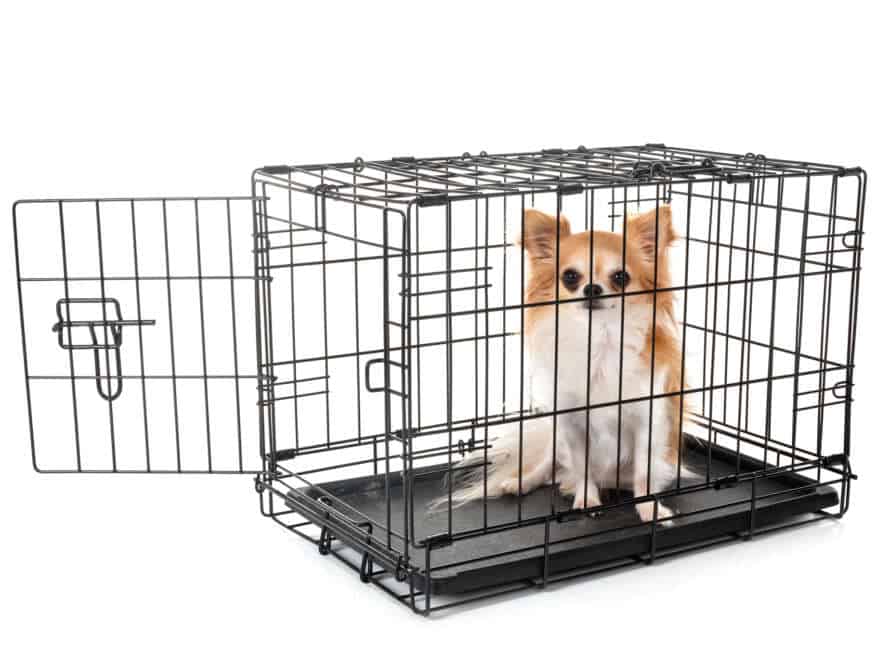What to Expect After Your Dog Transitions Out of the Crate
Transitioning your pup from the crate can bring lots of joy to you and them! But, it’s important to be ready for the changes that come with it. Here’s what to expect:
- More freedom- Your pup will have more space to explore, which could lead to messes or destruction.
- Separation anxiety- Your dog may feel anxious and lonely if they are used to spending time in the crate.
- Training struggles- You may need to repeat the training and behavior you taught while they were in the crate.
In conclusion, be patient and don’t expect a perfect transition. With consistency and positive reinforcement, your pup will adjust to their new freedom soon!
Your Dog’s First Day Out of the Crate
Having a pup in a crate can be beneficial when transitioning to a new home. But, it can be tricky if the dog isn’t ready to leave it. After your pup is out of the crate, there are a few things you should know. Here’s what to expect in their first days without the crate.
Give Them Plenty of Attention and Playtime
Giving your pup lots of affection and playtime is super important when they’re getting out of the crate. After staying in a small area, they need to adjust to their new home. Here’s how to make their first day out of the crate a success:
- Spend heaps of time with them. Reward their adaptation with kind words, treats and play.
- Let them explore and smell around their surroundings to help them feel comfy and at home.
- Set up clear areas for eating, playing and sleeping.
- Take regular short walks to burn off energy and reduce stress.
- Have patience and give them time to get used to their new environment – no scolding!
Remember, transitioning from the crate can be tough for your pup, so lots of love and support is key.
Create a Designated Area for Your Dog
Designating an area for your pup is necessary for them to become accustomed to life outside their crate. Here’s what you should remember:
- Pick a space with no hazards, like sharp stuff, plants that are toxic, or wires hanging.
- Give them blankets or a bed to make the spot comfy and welcoming.
- Try confining them to a particular room or using a pet gate to make a separate area.
- Supply them with lots of toys and treats to keep them occupied and mentally stimulated when you’re not around.
- Gradually increase the time your dog spends in their special area, so they feel safe and secure.
Start Potty Training if You Haven’t Already
If you haven’t started potty training your pup yet, it’s important to begin soon. Here are some tips to help you out:
- Keep a consistent feeding schedule. Take your pup outside after eating, drinking, or waking from a nap.
- Use a command like “go potty” to encourage your pup.
- Reward with praise and treats when they eliminate outside.
- Be patient and stay consistent. Accidents are part of the learning process.
- Monitor behavior closely and give plenty of chances to go outside. Have patience – the process may take time.
Pro Tip: Use positive reinforcement to encourage good behavior.
Challenges You May Face
Your pup is out of their crate! But that doesn’t mean it’ll be a breeze. Your dog may not be used to having so much freedom or may have trouble remembering where they should and shouldn’t go. So, it’s key to be patient and understanding with them. Let’s look at some of the things you may face during the transition.
Separation Anxiety and Destructive Behavior
Separation anxiety is a common issue among dogs. It can lead to bad behavior if not dealt with properly. Transitioning your pup out of the crate is tough, but there are ways to make it easier.
Here are a few tips:
- Your pup may bark or whine and act out when left alone. Start by leaving them alone for short periods, gradually increasing the time.
- Give them a familiar and comfy spot like a bed or crate to make them feel secure.
- Put out some toys or treats to keep them busy while you’re away.
- Use positive reinforcement techniques to help them link being alone with good things like treats or toys.
- Stay calm and be patient. It might take some time for them to get used to the new routine.
Remember, slow changes and positive reinforcements can help reduce separation anxiety and stop destructive behavior in your furry pal.
Accidents and How to Handle Them
Accidents can happen! Be prepared.
If you have a young pup or an adopted one just starting to transition out of the crate, know what challenges you may face:
- House Soiling: Your pup may not be used to peeing outside yet. Use positive reinforcement and take it out often to teach it.
- Separation Anxiety: Your pup may become anxious when away from you. Provide a comfy living space, leave familiar items, and increase time away slowly.
- Aggression: Some dogs get aggressive when transitioning. Seek professional help and provide a structured routine to avoid unexpected behavior.
Patience, consistency, and a positive attitude are key when dealing with accidents. Remember, your pup’s behavior is a reflection of its environment and training.
Sleep Schedule Changes
Transitioning your four-legged pal out of the crate can be hard. And it often brings changes to their sleep schedule that you didn’t expect. Here are some challenges you may face and what to expect in this transition period:
- Restless nights. Your dog might have a hard time settling into their new environment and experience anxiety, making them have a restless sleep.
- Accidents. Without the safety of the crate, your pup may be more prone to having accidents during the night.
- Disrupted sleep schedule. Your doggo may take some time to adjust to a new routine; including bedtime and wake up times.
- More daytime energy. As your pup gets more comfortable outside the crate, they can be more active during the day.
By being patient and gradually getting them used to not using the crate, you can help make the transition smoother and limit any disruptions to their sleep schedule. Pro Tip: Establish a new bedtime routine with a calming activity such as a walk or cuddle time, to help your pup relax and have a peaceful night’s sleep.
How to Help Your Dog Adapt
The crate can be great for controlling your pup’s barking, anxiety and chewing. Post-crate, help them adjust to the house. A few easy tactics can make the shift from crate to home simpler. It’s a win-win for you and your pooch!
Stick to a Schedule
For your pup to adjust and transition away from their crate, it’s significant to stay with a routine. Dogs love structure and a predictable plan can reduce their anxiousness and motivate good habits.
Here are some steps to help your dog move away from the crate:
- Make a special sleeping area for your pup, like a dog bed in a calm corner of your bedroom.
- Progressively expand the time your dog spends away from the crate each day, beginning with small intervals and eventually getting to a full night’s rest away from the crate.
- Abide by a normal timetable for meals, walks, and playtime, giving your pup a sense of regularity and security.
- Utilize positive reinforcement methods such as compliments and rewards to promote good behavior and discourage unwanted behaviors.
By following a constant routine, you can help your dog feel more secure and comfortable as they transition away from the crate.
Pro tip: Be patient and consistent with your training – it can take some time for your pup to get used to the change.
Gradually Increase the Time Your Dog Spends Alone
Gradually increasing alone-time for your pup can help them adjust out of the crate. Here’s how:
- Start with 5-10 minutes. Increase amount of time as pup gets used to it.
- Set up a calm, safe space when you leave; bed, toys, treats.
- Reward good behavior when you come back with treats or words.
- Anxiety & stress is normal during the transition period. Consult a trainer or vet if you’re worried.
- Be patient & celebrate your pup’s progress!
Use Positive Reinforcement Techniques
Positive reinforcement is key for your pup’s adjustment to new experiences. Here are some tips:
- Reward good behavior with treats or verbal praise, like staying calm outside the crate.
- Don’t punish, as this can cause stress.
- Start with a few minutes outside the crate and increase the time gradually.
- Engage them with toys and activities to keep them occupied while out.
- Be patient and consistent during training – every dog learns differently.
With positive reinforcement and patience, your pup will adapt to new situations and transition out of their crate.
Special Considerations for Puppies
Puppies transitioning out of a crate need special consideration. Remember that puppies are learning and may not be able to control their bowels or bladder for long. Be prepared to take them out frequently. Patience is key when teaching things like potty training, commands and manners. Here are some special considerations for puppies coming out of a crate:
Make Sure Your Home is Puppy-Proofed
Bringing home a pup is a fun experience! But, you must be ready to keep them safe. To puppy-proof your home, try these steps:
- Cover electrical cords with plastic, or tape them to walls.
- Secure cabinets, drawers and doors with baby-proof latches.
- Get rid of small items they could swallow or choke on.
- Store toxins away, out of the pup’s reach.
- Install a baby gate or fence to restrict access to certain areas.
When your pup is ready to explore, take it slow. Create a supportive environment to help them transition. A final tip: Give loads of love, patience and training to your furry family member!
Expect Training and Potty Accidents
Expecting training and potty accidents is a must when raising a puppy. Especially during the transition period out of the crate. Here’s what to do:
- Don’t scold your pup if they make a mess inside. Instead, remove them from the area and take them outside to their designated spot.
- Be consistent with your pup’s training and reward good behavior.
- Look for signals that your pup needs to go outside, like sniffing or circling a spot.
- Gradually increase the time your pup spends out of the crate. This avoids overwhelming them and any accidents.
- Puppy pads or newspapers can be useful but should be phased out when your pup is more comfortable going outside.
- As they learn and grow, accidents will become less frequent.
Consider the Use of Puppy Pads
Puppy pads are a great way to move your pup out of their crate and teach them to use the restroom outside. Here’s why you should get some:
- Convenience: Puppy pads are perfect for those who can’t take their pup out often. Plus, accidents are easier to clean up.
- Training: The pads will help with potty training, since they provide a spot to go.
- Gradual Transition: Use puppy pads to make the switch from crate to outside easier.
It’s important to remember that puppy pads are only meant to be a temporary solution. Gradually lessen your pup’s reliance on them until they’re fully potty trained.
Follow-Up Tips
When transitioning your dog out of the crate, make sure it goes smoothly. Establish positive reinforcement and set expectations for your pup. Also, make home adjustments for their comfort and safety. Be aware of issues that could arise and be prepared to handle them.
Monitor Your Dog’s Behavior Closely
It is important to observe your pup’s behavior closely to ensure their health and happiness. Here are some tips after they transition out of the crate:
- Begin with small durations: When transitioning out of the crate, start by leaving your pup alone for a few moments. Increase the length of time gradually. This will help your pet adjust to their new lifestyle and environment.
- Notice their actions: Watch your dog carefully when you leave the house. Look for signs such as barking a lot, heavy panting, drooling or destructive behavior. React to these signs correctly.
- Exercise them: Make sure your pup gets ample exercise and playtime before leaving them alone. This will help them stay relaxed, reducing the chances of destructive behavior.
By observing your pup, you can identify warning signs of stress or anxiety early on. You can also get to know your pup better and look after them better.
Be Patient and Consistent in Your Training
Patience and consistency are key when training your pup. Here’s what to expect when transitioning them out of the crate.
- Start slow. Leave the crate open so they can come and go. Gradually increase the time they spend out of the crate.
- Accidents may happen. Be patient and consistent with your routine.
- Use positive reinforcement, like treats and praise, for good behavior.
- Every dog is different. Freedom may take time.
Pro Tip: Be patient and consistent. Encourage good behavior with treats and praise.
Contact a Professional Trainer or Behaviorist if Needed
Transitioning your pup from the crate can be tricky. Commonly, dogs show signs of distress like separation anxiety, loud barking, destructive chewing, and other naughty deeds during this transition. Here are some tips to make the switch smoother:
- Gradually increase the time your dog is out of the crate
- Applaud and reward good behavior
- Provide enough exercise and mental stimulation
- Have patience and understanding
Yet, if your pup still acts up, it’s time to look for professional help. A qualified trainer can inspect your dog’s conduct and offer useful ways to modify their behavior, making the switch out of the crate a positive experience.
Pro tip: Regular training and socializing aid in preventing behavioral issues in pooches and enhance the quality of life for you and your fuzzy pal.
Frequently Asked Questions
Q: How long should I wait before letting my dog out of the crate for good?
A: It’s important to gradually transition your dog out of the crate instead of doing it all at once. Start by leaving the crate door open during the day while you’re home and gradually work up to leaving it open at night.
Q: Will my dog always need to be crated when I’m not home?
A: Not necessarily. If your dog is well-behaved and has been properly trained, they may not need to be crated when you’re not home. However, it’s always a good idea to have a safe space for them to go if needed.
Q: What should I do if my dog shows signs of anxiety when out of the crate?
A: If your dog seems anxious or uncomfortable when out of the crate, it’s important to take it slow and provide positive reinforcement. You can also try using calming techniques such as music or aromatherapy.
Q: Should I expect any behavioral changes in my dog after transitioning out of the crate?
A: It’s possible that your dog’s behavior may change after transitioning out of the crate, especially if they were crated for an extended period of time. Be patient and consistent with training to help them adjust to their new routine.
Q: What can I do to prevent accidents when my dog is out of the crate?
A: Supervision is key when your dog is out of the crate. Make sure to take them outside frequently and watch for signs that they need to go. It may also be helpful to limit their access to certain areas of the house until they are fully trained.
Q: Can I still use the crate for my dog even after they are fully transitioned out of it?
A: Yes, many dogs enjoy having a cozy, safe space they can retreat to even after they are fully trained. However, it’s important to ensure that the dog does not feel trapped or isolated in the crate, and to continue to provide them with plenty of exercise and socialization outside of it.

